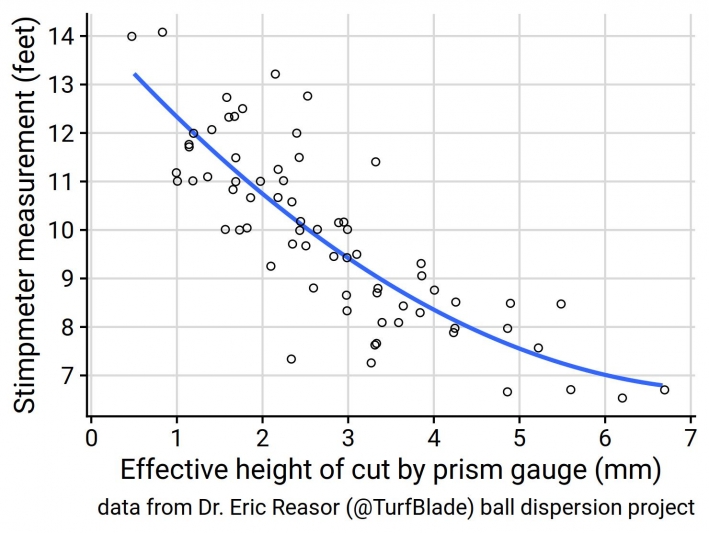Measuring effective cutting height with a laser
I think we’ve all seen the prism gauges that can be used to check the effective height of cut. Well, they sort of can be used for that, but there’s a catch. If you move your eyes just a little bit, that changes the angle at which you are lining up the tips of the grass blades with the measurement scale. Because of that, there’s always a bit of uncertainty with that measurement.
I recently met Alexander Grengs at a meeting of the South China Turf Managers Association. He introduced himself and mentioned that he had a height of cut gauge that he thought I might be interested in. I said something like “I recognize the importance of effective height of cut, but I don’t bother checking it because I don’t enjoy making readings with the typical gauges I’ve seen. Please find me after the seminar and show me what you’ve brought.”
After the seminar, and before lunch, he showed me his Turf HOC gauge.1 It uses a line laser to take the guesswork out of the measurement. He asked me if I liked this invention, and I said yes, I find it to be quite an exciting innovation. I was thrilled when he said I could keep the gauge for use on my travels to study turfgrass around the world. Thank you, Alexander!
I made this short video with a quick demonstration of how this works.
If the light beam shows on the measurement scale and there are no points of light on the grass, then the beam is passing above the effective height of cut.
The light can be lowered, and eventually leaf tips will start to capture the light. Adjust the light beam until it is just at the very tip of the leaf blades. That’s the effective height of cut.
If the light beam is moved lower, into the canopy, then a lot of leaves capture the light and eventually the beam will not show on the scale at all. This, obviously, is below the effective height of cut, but I find it especially satisfying to move the light beam through the canopy—up, up, and up—until the light beam is just above the leaf tips, and I am confident that I now have an effective height of cut.
I wrote about the importance of effective height of cut in this PACE Turf update.
I was surprised, in Eric Reasor’s PhD research, to find such a consistent relationship between effective height of cut and green speed. It’s obvious after thinking it over, but prior to looking at the data (chart below from the PACE Turf Gallery) I hadn’t realized green speed would be consistently tracking the effective height of cut.
Nitrogen rate, the growth rate of the grass, rolling, and all the things that can be adjusted to allow the effective height of cut to be lower, will all contribute to an increased ball roll distance (green speed).
Get more information about the Turf HOC gauge at these links: Turf HOC website, the Turf HOC YouTube channel, or the Turf HOC Instagram page. ↩︎
